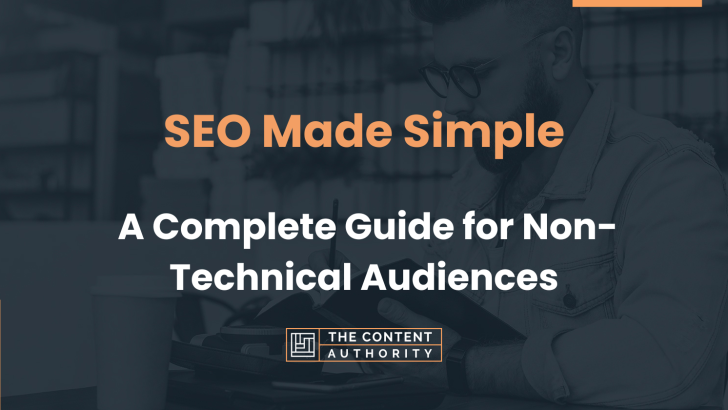Now, more than 2.14 billion people prefer to buy goods and services online. More and more people rely on the web to discover brands and products and consume content. So, if you want to capture your potential clients, you need to be out there, and search engine optimization (SEO) can help.
Yet, while its importance is hard to undervalue, for many people, website optimization still sounds like something incredibly technical and complicated, but it doesn’t have to. Here, we aim to make SEO simple for a non-technical audience. Let’s dive in!
What Is SEO and Why Does It Matter?
It is website optimization used to generate a more significant amount of organic traffic from search engines. Simply put, the core goal of optimization is to get more users to find you on the search engine results pages (SERPs) and visit your site naturally (without stimulating their interest with paid ads).
This goal is achieved through multiple tactics, including (but not limited to):
- Keyword research,
- Content creation and optimization,
- Link-building,
- User experience (UX) improvement, etc.
Now, why is it so important? Website optimization has plenty of benefits. It complements your overall marketing efforts by helping you boost your online visibility, gain more visitors, and potentially convert more prospects into customers. On top of that, it allows brands to establish trust and credibility and improve their customers’ journeys.

Demystifying the SEO Jargon
To understand website optimization better and start leveraging it to your benefit, you must understand the key terms well. Let’s take it from there and demystify the core SEO-related jargon you need to know.
- Traffic – The total number of visitors who land on a particular website.
- Web crawlers – Search engine bots that find and index websites and their content.
- Indexing – The process search engines use to organize and then store the information about websites collected by crawlers.
- Keywords – Words and phrases users type into the search bar to find things on the web.
- Keyword stuffing – A spammy strategy that implies unnaturally using too many keywords on a page just to rank higher, meanwhile harming content quality and user experience.
- Rankings – The site’s position on a search results page.
- SERP (search engine results page) — The page users see after they look for something in search engines.
Lastly, now that you know the key terms, let’s move on and discover the main practices and rules of search engine optimization.
Content is King (and Queen)
Search engines rank digital content based on several factors. The first one is relevancy. You need to understand your target audiences and their interests. Create content that matches the expectations and needs of your audience to ensure relevancy.
Secondly, search engines rank content based on expertise, authority, and trustworthiness. To meet these needs, you must provide content on topics that you are an expert in and complement it with valid and valuable insights, facts, etc. Remember, the more value your content brings, the better. So keep your focus on quality.
Last but not least, if you are aiming for truly SEO-friendly content, you need to use keywords appropriately. Start with in-depth keyword research. When approached right, this process should help you identify the most relevant keywords for your pages to get higher in SERPs. You can simplify it with specialized software, such as Semrush and other efficient Semrush alternatives – SEO platforms that offer you a variety of tools for keyword research and other SEO needs.
After handling keyword research, you need to incorporate the found keywords into your pages. Be sure to optimize your landing pages, blog articles, product descriptions, titles, headings, and meta descriptions. Most importantly, be sure to integrate keywords naturally and strategically. Avoid keyword stuffing to bring the most value to your audience and rank higher.
Building a User-Friendly Home
The better experience users get with your site, the less likely they will leave it right after landing on one of your pages. Also, positive UX leads to better engagement and longer session times on your website. So, all in all, user experience can also positively affect your rankings.
Here’s what you need to do to optimize it:
- Website structure and navigation – To create a user-friendly site, opt for a hierarchical structure that uses visual hierarchy to bring forward the most crucial website sections or content. Group related content into categories to help users find the information they need quickly.
- Website speed and mobile responsiveness – Site loading speed greatly affects user experience and, thus, your rankings in SERPs. According to Google’s guidelines, a perfect load time is 2.5 seconds or less. Strive to reach this benchmark to create a high-ranking site. As for mobile friendliness, it is another direct ranking factor. In 2019, Google released its mobile-first indexing. According to this indexing system, Google primarily uses the mobile version of a website to crawl, index, and rank it. Not to mention, mobile friendliness is essential for positive UX now that 57% of web searches come from mobile devices.
- Images and videos – Using engaging and relevant visuals can greatly boost your visitors’ engagement. Yet, simply incorporating images and videos into your pages isn’t enough for your SEO. To rank higher, you need to complement your visuals with relevant alt text. Alt text provides context to all your visuals to help search engines understand them appropriately. Also, pay attention to image sizes to ensure they don’t affect loading speed.
- Internal linking – A well-thought-through structure of internal site links contributes to your overall website structure and helps users easily navigate through it. By linking related content, you can increase the time visitors spend on your website, reduce the number of visitors who leave, and, accordingly, improve the overall user experience and rank higher.
Building Trust and Authority
When other reliable resources trust and share the content you provide, it indicates that you are a trustworthy and accurate source of information. Search engines promote such websites by placing them higher in SERPs. Thus, establishing trust is another key to successful website optimization.
Today, there are multiple ways to build trust and authority:
- Backlinks – Earning mentions from trusted and reputable sites is an indicator of the quality and value of your content.
- Social media presence – Social media networks offer you a meaningful way to connect with your audience and establish lasting and trustful relationships.
- Local SEO – Local SEO helps you appear in local search results and enables your prospects to find your physical locations (aka stores or offices) on local map packs. This helps boost visibility and enhance brand credibility, if applicable to your business.
- Building relationships with other websites in your niche – Establishing lasting relationships with other sites helps you become a valuable partner and unlock lots of opportunities for collaborations, mentions, and guest posting, which can also contribute to your credibility.
Tracking Progress and Staying Informed
The final section of our SEO guide for a non-technical audience is all about measuring success and adjusting your strategy to maximize the results. By tracking progress and staying informed on the key performance metrics, you can detect which parts of your strategy work well and find areas for improvement. An easy way to track your results is by using free SEO analytics tools.
In order to measure your results effectively, you need to understand the basics of analytics. Study different metrics and performance indicators related to your keywords, traffic, and ranking to interpret your results right.
On top of measuring your own results, also be sure to keep an eye on the latest SEO trends and changes. Being aware of new trends should help you gain a competitive edge and upgrade your strategy for the best results.
Conclusion
Website optimization isn’t really as complicated and frightening as it seems. Now you know about the basics and can get started with it and achieve incredible results. Most importantly, remember that SEO is a marathon, not a sprint. That is, consistency is key to everything.
So use the knowledge and tips from this guide to get started, and don’t be afraid to experiment and ask for help to level up your game!

